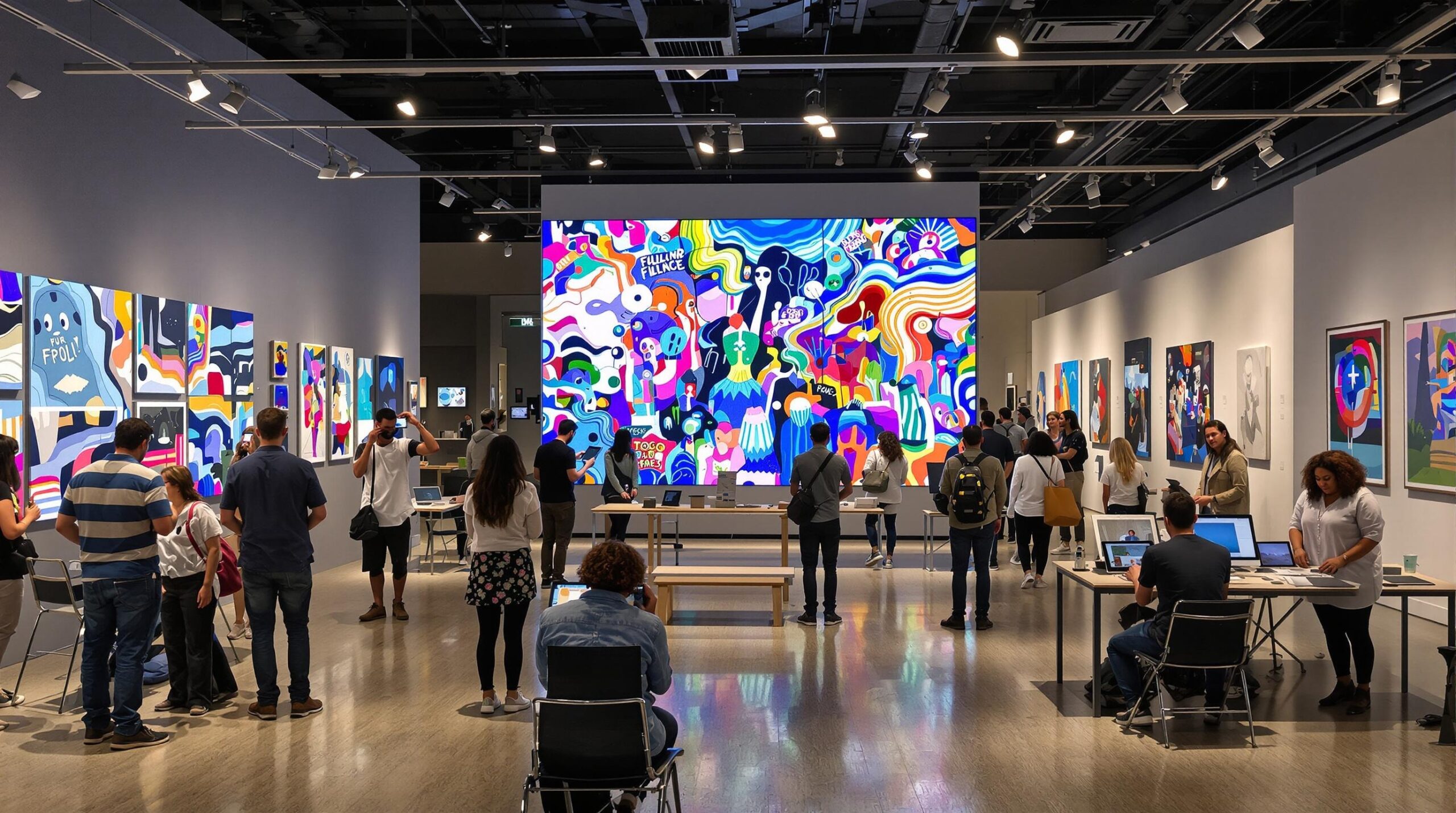Artificial intelligence continues to reshape diverse industries. Museums, as cultural pillars, are embracing these technological advancements for dynamic change. Revolutionary AI-powered software now empowers institutions to redefine both artistic creation and visitor engagement. This shift provides new artistic expressions, augments curation, and bridges the gap between traditional display and interactive experience. Museums leveraging AI innovation are witnessing a surge in creativity and public interest.
The Dawn of AI Art Creation Tools
AI software designed for artistic purposes employs powerful machine learning algorithms. These systems analyze massive datasets, including classical and contemporary artworks. The software then generates novel pieces reflecting learned styles, techniques, and themes. Artists and museums now collaborate with AI as a creative partner, rather than just a tool. This partnership generates unique art that often blurs the line between human and machine origins.
Expanding the Role of Museum Curators
Curators wield new AI tools to curate exhibitions with unprecedented depth. They use algorithms to analyze visitor preferences and behavioral data. As a result, curatorial decisions pair human expertise with actionable insights from advanced analytics. These tools suggest artwork arrangements, adjust lighting, and even generate thematic digital art on demand. The curation process evolves to become more dynamic and interactive, accommodating visitor interests and historical context.
Dynamic Visitor Engagement Through Interactive AI
AI-powered installations offer personalized visitor journeys. Interactive displays analyze visitor gestures and provide tailored responses. Some AI-driven projects allow guests to co-create digital works of art in real time. Others use augmented reality overlays to enhance traditional exhibitions with computerized interpretations. These technologies encourage active participation, transforming the museum experience from passive observation to collaborative creation.
Preserving and Interpreting Art with AI
Museums face persistent challenges in preserving fragile or deteriorating works. AI assists restoration experts by analyzing fine details from high-resolution scans. Algorithms suggest restoration techniques that maintain artistic integrity while reversing visible damage. Additionally, AI tools interpret the symbolism and context of exhibited works, making information accessible through smart audio guides and multilingual digital displays. This deepens understanding while preserving the precious cultural heritage for future generations.
Creating New Genres and Artistic Movements
Collaborations between human artists and AI produce innovative genres. AI-generated pieces appear in global exhibitions, sparking debate about artistic authorship. Some museums dedicate entire galleries to AI art, encouraging visitors to explore how technology shapes creative expression. These exhibitions inspire artists to experiment within and beyond traditional boundaries, ushering in new movements fueled by algorithms. Public forums and workshops enhance understanding and foster acceptance of digital artistic practices.
Improving Accessibility and Inclusion
Accessibility remains a core mission for museums worldwide. AI-powered translation offers real-time conversion of wall texts and audio guides into numerous languages. Facial recognition and gesture-based navigation help guests with limited mobility explore digital exhibits. Text-to-speech features ensure inclusion for visitors with visual impairments. These technologies break down barriers, making art more approachable to broader audiences. Through AI, museums foster inclusivity and expand community outreach.
Ethical Considerations and Challenges
Despite its advantages, AI-generated art raises ethical questions. Ownership, authorship, and copyright issues become complex with algorithmic creation. Museums address these concerns by developing clear guidelines. Committees evaluate the provenance of AI-generated pieces before acquisition or exhibition. Transparency with visitors about the use of AI helps preserve trust. Open discussions aim to balance innovation with respect for artistic legacy and intellectual property.
Case Studies: Museums Leading the Way
Several modern institutions are at the forefront of this transformation. The Metropolitan Museum of Art in New York launched an initiative to use AI to curate personalized tours. Paris’s Musée d’Orsay collaborates with digital artists, showcasing AI-generated interpretations of Impressionist works. The Mori Art Museum in Tokyo integrates AI chatbots that facilitate real-time art discussions. These institutions serve as models, inspiring others to adopt similar innovations and redefine their cultural missions.
Future Prospects: The Ongoing Evolution of AI in Museums
The journey with AI-powered art is only beginning. Continued advances in machine learning promise even richer creative collaborations. Museums are investing in AI research programs, fostering partnerships between technologists, artists, and educators. Over time, these developments will lead to multicultural, multidimensional experiences for visitors. Hybrid physical-digital exhibitions are poised to become the standard, featuring interactive, evolving displays that resonate across generations and cultures. These prospects encourage museums to shape artistic evolution proactively.
Conclusion: AI as a Catalyst for Museum Innovation
AI-driven software is transforming art creation, curation, and interaction within modern museums. Institutions embracing this revolution are seeing more diverse, engaging, and inclusive experiences for visitors. By balancing ethical considerations with pioneering technology, museums can amplify their cultural impact. This harmonious blend of human creativity and machine intelligence paves the way for the next age of artistic innovation. As more museums adopt advanced AI tools, the boundaries of art and curation will continue to expand, delighting and inspiring worldwide audiences.

